#street levels gallery florence
Text
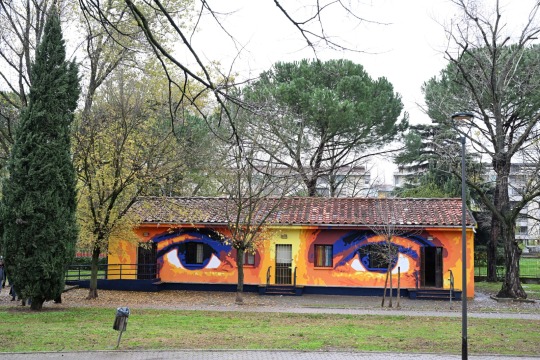
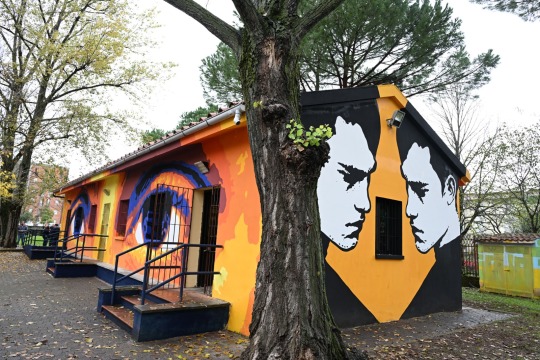

Streetart by Ache77 @ Florence, Italy, for Street Levels Gallery
More info at:
https://barbarapicci.com/2023/12/12/streetart-ache77-florence-italy/
3 notes
·
View notes
Text
Streetart – Kraita317 @ Florence, Italy
Title: Different Might be Everything Location: Florence, Tuscany, Italy Artist: Kraita317 (Italy) For: Street Levels Gallery At: Museo Novecento Year…Streetart – Kraita317 @ Florence, Italy
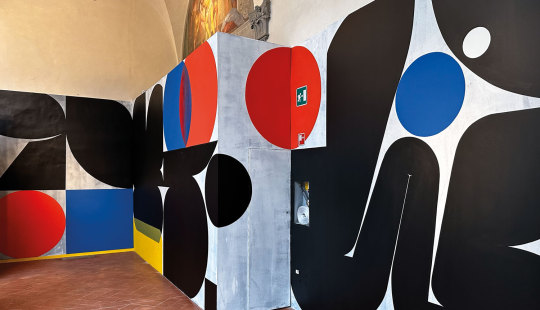
View On WordPress
0 notes
Text
Experiencing the Art and History of Florence: A Private Tour of Renaissance Majesty
Florence, the enchanting jewel of Tuscany, has long captivated the hearts of travelers from around the world with its unparalleled beauty, rich history, and artistic treasures. While exploring this Italian city can be an unforgettable experience on its own, embarking on a private tour to Florence elevates your visit to an entirely new level. In this article, we'll delve into the many reasons why a private tour to Florence is the ultimate way to immerse yourself in the magic of this Renaissance masterpiece.
Personalized Itinerary:
The beauty of a private tour lies in its tailor-made experience. With a private guide, you have the flexibility to craft your own itinerary based on your interests and preferences. Whether you're an art aficionado eager to explore the Uffizi Gallery and the Accademia Gallery or a history buff fascinated by Florence's medieval architecture and political legacy, your private tour can be customized to match your desires.
Skip the Lines:
Florence's most renowned attractions, such as the Florence Cathedral (Duomo) and the Palazzo Vecchio, often draw long queues of tourists. However, with a private tour, you can bypass these lines, ensuring that you make the most of your precious time in Florence. This not only saves you valuable hours but also allows for a more intimate and enjoyable experience.
Expert Local Guides:
One of the most significant advantages of a private tour to Florence is the expertise of your local guide. These passionate and knowledgeable individuals bring the city's history and culture to life with fascinating anecdotes and insights. They can provide a deeper understanding of Florence's role in the Renaissance and its impact on art, science, and politics.
Discover Hidden Gems:
While Florence's famous landmarks are undoubtedly stunning, the city is also brimming with hidden gems waiting to be uncovered. Private tours often include visits to lesser-known treasures, such as charming neighborhoods, quaint artisan workshops, and secret gardens. These off-the-beaten-path experiences reveal a more authentic side of Florence.
Flexible Pace:
Exploring a city as rich in history and culture as Florence can be overwhelming. With a private tour, you have the freedom to set your own pace. Whether you want to spend hours admiring Michelangelo's David or simply stroll through the picturesque streets, your guide will adjust the tour to match your rhythm.
Exclusive Access:
Private tours often grant you exclusive access to places that are typically off-limits to the general public. Imagine standing in the Vasari Corridor, a hidden passage connecting the Uffizi Gallery to the Pitti Palace, or entering the Boboli Gardens after hours for a tranquil evening stroll. These unique experiences allow you to see Florence from a perspective few others ever do.
Culinary Adventures:
Florence is not only a haven for art and history but also a culinary paradise. Private tours can incorporate gastronomic delights into your itinerary, introducing you to the city's delectable cuisine. Savor mouthwatering Tuscan dishes, sample local wines, and explore food markets for an authentic taste of Florence.
Personal Connection:
A private tour allows for a more personal connection with your guide. Beyond being experts, they often become friends, sharing their passion for Florence and creating a memorable experience you'll cherish for a lifetime. Their insights and recommendations can extend beyond the tour, enhancing your entire stay in Florence.
For More Info :-
Private Tour Company Florence
0 notes
Photo
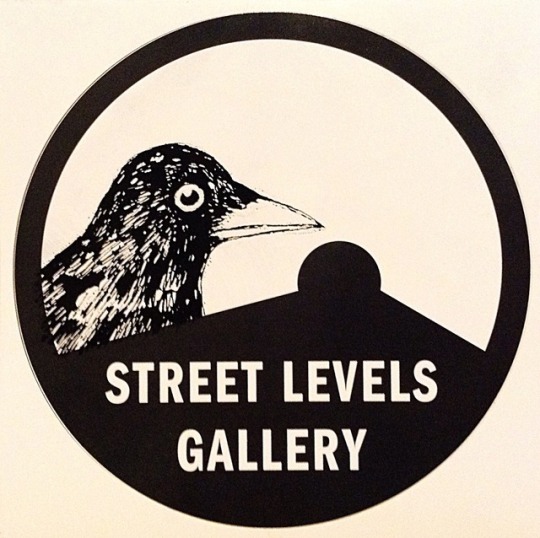
Street crow, Micron pen drawing on sticker from Street Levels Gallery in Florence, Italy
11 notes
·
View notes
Text
Street Art from Florence “Once upon a time in Amsterdam”
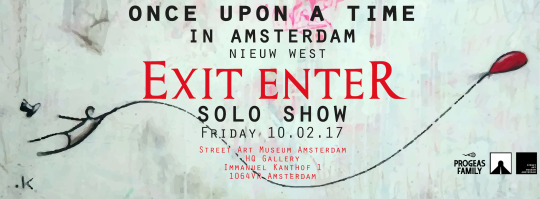
We see Street Art as a new dynamic way to communicate with each other. Street Art exists around the globe. However, Street Art is territorial and it’s flavour changes from city to city. So we invited Florentinian Street Art Gurus to share their flavour with us. Street Art Museum Amsterdam are proud to present Progeas Family, Street Levels Gallery, Method Productions and Exit Enter for the first time in Amsterdam to share their story and experience ours – an adventure and a research trip about street art, heritage, Renaissance approach to city making and contemporary take over of such approach by urban art movements.
It is usual to say that ‘a picture is worth a thousand words’ and, during the Renaissance period (XIV sec. XVI sec.), the noble Florentine families knew it. A lot of potent and influential families, like de Medici, initiated commissions - from selfies-portraits to magnificent buildings, canvases, frescos, sculptures and other forms of performing arts of their contemporary masters - in order to mark a proof of their power yet open the gates of communication with the other. The Renaissance’s cultural wind forever changed Florence's face, giving us one of the most beautiful city in the world.
Florence is a city of five neighborhoods, with the most well-known as the historical centre (heritage protected by UNESCO). An area where most Florentinian locals don’t live anymore, Florence’s historical centre, like Amsterdam, is being overrun by tourists. Every brick is protected and street art lives on bricks. Street Art is still considered vandalism, an illegal activity, and is therefore a criminal offence.
The Graffiti Writing movement started in Florence much later than in other European and Italian cities.
From 2001 many hardcore artists like BLU, RUN, ZED1, EMA JONES and ORTICANOODLES passed through the city bringing their contribution in the social centers and tunnels of the city. This kind of original creativity wave contributed to the birth of a new local thinker artist generation who started to write their messages on the walls of the city inside and outside from the center. Whilst Florentinians continued to live in a ‘goldfish bowl age’ until somewhere in 2007, when the streets started to get packed with tags and bombs, there were two popular crews acting in the city: Olé Crew (Out Law Elements) and ADR Crew (Adrenaline/AllDreamsReal/AllDayRiot). They principally wrote on shutters, tunnels, train stations, abandoned buildings, street furniture and sporadic residential neighborhoods. By 2011 most of the notorious crews found themselves in trouble with police and we can safely say that the age of Street Art had begun. The less aggressive pieces appeared everywhere: tiles, drawings, posters, poems, stickers.
The first artist who started to spread his message in a massive way in the historical center was CLET, who was working with the street signs. Despite ‘sticking illegally’ the ‘vandalised signs’ became one of the most known tourist gimmick of the city. GUERRILLA SPAM and HOPNN were pasting up artistic posters with activist messaging using organic biological glue and STELLECONFUSE spread his ‘Plant a tree’ messages using the stickers.
“I remember my first trip to Florence in November 2012 and a shocking revelation of how little street art was out there on the streets. I saw a few stickers and posters, many tags and a couple of throwups, but it seemed that the most dominating form of spreading the message through street art was CLET and Anonimous Street Poetry crew who have covered most of the center of the city with carefully designed A4 sheets filled with poems. In summer of 2013 I came across Exit Enter. The refreshing little stick characters, princes and princesses were bouncing off the walls onto electricity boxes and into the darker alleys of Medici empire.” recalls Anna Stolyarova, the founder of Street Art Museum Amsterdam.
From 2013 till now an incredible number of different artists started working in the streets of Florence and many more came to live and produce here, the events around the topic as well as the exhibitions increased too. The Progeas Family was founded in 2013 with a mission to make a new kind of cultural event and to experiment with new forms of art. In 2014 Julien Vanucchi from Method Productions made the first short documentary film about Street Art in Florence and its relationship with the people, culture sector and municipality.
In December 2016 members of Progeas Family, Matteo Bidini and Gianluca Milli in collaboration with other artists set up Steet Levels Gallery - the first street art gallery in Florence that opened with a collective show “Unity Wanted”.
Meanwhile in Amsterdam, we just had a year of Banksy - from miniature MoCo museum to giant Beurs van Berlage - with the largest paid poster campaign this city has ever seen. Street Art Museum Amsterdam is celebrating its 5th year anniversary and aiming at fully registering its collection before the end of 2017. Street Art Today are opening the 2nd Street and Urban Contemporary Art Museum in Amsterdam North. Schiphol Real Estate acquired 15 street art pieces for their temporary collection and brought street art to TEDx. RUA realised another massive project in South East of Amsterdam. The pillars of street art, the galleries, are blooming - GoGallery, Original Dampkring gallery and Vroom & Varossieau - are putting up very different and exciting shows. The municipality are discussing a potential position in the city management for Street Art Curator.
Therefore, there is no better time than present to share Amsterdam stories with the Florentinians. That is why we chose to open the season with a delightful fusion of a dialogue between our cities. After all, Amsterdam and Florence are of similar size, both experienced the rebirth, the transformation from a ‘dump to an example’, both are heavily protected by the Heritage authorities and have low tolerance to vandalism, yet both are still considered progressive art cities. How does being a street artist in Florence compare to a residency in Amsterdam: putting up a show, painting a mural and spreading the game legally and illegally?
With his first solo show in Amsterdam, Exit Enter wants to create a bridge between Street Art Museum Amsterdam and the Florentine street art scene through the representative artworks produced in Florence and Amsterdam. Exit Enter will show you how his creativity was transformed from a sheet of white paper in the studio to a masterful street art piece. Exit Enter will present canvases, sketch works and an interactive storytelling mural painting. The aim is to showcase the wide spectrum of art associated today with Street Art posing a question of street art in situ vs in a gallery.
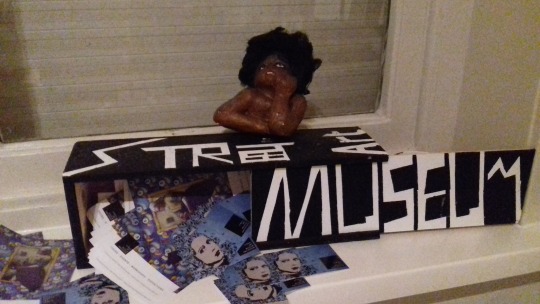
ABOUT THE ARTIST - Exit Enter (IT)
Exit Enter (1990) is an Italian born illustrator, painter, street artist and story-teller.
His little stick-man-like characters run alongside the Florentine walls telling stories about kings and Indians, about us, our love and red balloons.
He started painting very young and soon after high school, Exit Enter enrolled in the Fine Arts Academy of Florence, where he began his professional relationship with painting. In accordance with his humour, his artistic growing and his life happening, obsessive drawings ranging from little stories, every day, everywhere and to the larger works on the Florentinian scene, as if a logical extension of the impulse creativity. Through a very distinctive and stylized mark, Exit Enter creates an essential character, which expresses himself with a simple esthetics, accessible for everyone.
Exit Enter’s debut on the streets of Florence resulted in a series of ‘a stick-man playing with red balloon’ - flying, running inside the wall, becoming the king of the night. The stories were combined with some words like ‘fly away’, ‘exit’, ‘enter, ‘ love’. A few months later he noticed that a lot of people had begun the interaction with his artworks and started calling him ‘Exit Enter’.
“Normally, when I start putting colors and moving lines over a white paper, I’m EXITing. The creative act it’s out from the material world, it’s out from the time; if imagination it’s to create a projection of an image in your mind, with my drawings I want to stimulate the audience’s imagination to permit them ENTERing inside this detached ‘creativity act’ world.”
His essential artistic works create bridges between the stories and the people so, in the contemporary chaotic city, while you are going to work, or picking up your kids at school, you will always have a momentary serendipity element of surprise and smile added to your day. Exit Enter will get your attention.
Initially, when the anonymous stick-man came out from the artist's mind, Exit Enter didn’t know what kind of messages he wants to transmit through it to the people. It was only after people started recognize and interacted his artworks, he knew what it is that is in his unconscious purpose. He understood the objective of Exit Enter’s art as its own entity and how his art can be a tool to enter in contact with the audience and make possible the exiting and entering “into the light” - an original thinking, a question, an emotion, a laugh
#street art amsterdam#street art florence#street art italy#street art netherlands#street art museum#next levels gallery#graffiti#illegal art#street art tours#neighbourhood walk#street art expo#exhibition street art#exit enter#street art exit enter#graffiti exit enter#street levels gallery florence#street levels gallery
2 notes
·
View notes
Note
49, 47, 31, and 35 for the asks!
49, 47, 31, and 35 for the asks!
There is nothing better than an ask from my friend the Crazy Hand (official).
49. If you chose to get a tattoo what would it be and where would you want it?
Casey, I’m such NOT a tats person. Definitely an age thing; the only men I knew with tats were Scout leaders who had served in Korea or WW2 as enlisted men and had nothing to prove about masculinity to anyone. I don’t mind but don’t “get” tattoos.
I’m old enough to have been an executive at a manufacturing company that had a “no visible tattoos” policy for all salaried employees. It was a gang affiliation thing. We had a, ahem, a rough and tumble workforce if you’re following along. Think Fairless Works but much, much rougher.
47. Do you think you'd make a good teacher? Why or why not?
Yes, I would/will be an exceptional teacher, the best you ever had. I present well, relate to all ages/abilities, encourage but do not pamper, always offer alternate ways to solve a problem. Once I am mobile again I expect I will teach at the Community College level part time.
31. What is the 10th picture in your phone gallery?
As in Favorites? Sly Stone at Woodstock. As in a photo I took? A garden in Florence, Italy.
35. What did I think was cool when I was younger?
Hmm, say 12-14? Smoking. Coffee. Dave Brubeck. Cocktails (as a concept, I did not drink). Bossa Nova music. The Beatles. The Rolling Stones. Dressing well - the ‘collegiate look’ - button down oxford shirts, chinos, dirty bucs, argyle socks, natural shoulder suits, sport jackets of Harris Tweed (look for the label) Hendrix, Carnaby Street, smoking, outdoor clothing from LL Bean, camping, becoming self reliant (I could cook basic meals at 14). Smoking Tiparillo cigars. Smoking unfiltered Camel cigarettes. Clint Eastwood. Pretty girls. Having exceptional manners (Mom and Dad were sticklers). Writing to be understood. Being a good editor (I was at 12). Being a good public speaker (ditto). My Schwinn bike. Brut and Hai Karate cologne. Oh, and smoking cigarettes. Monty Python. Mad magazine. National Lampoon magazine. Playboy magazine! The *Education* of * Hyman * Kaplan*. Chip Hilton. The Hardy Boys. The Penrod Tales. The Philadelphia Phillies. Army Football. The Philadelphia Flyers. Penn basketball. The Penn Relays. Dragnet TV show. Adam-12 TV show. Combat! with Vic Morrow. N.C Wyeth. Dick Tracy comics. The movie Shane. Have I mentioned smoking?
17 notes
·
View notes
Text
A tour of Europe - Austria, Italy and France.
“Every block of stone has a statue inside it and it is the task of a sculpture to discover it” – Michelangelo.
And we are just standing in front of the world’s masterpiece of renaissance era ‘David’ in Florence (Italy) asking myself is it real or am I dreaming as I felt the presence of the protagonist of the book “Agony and Ecstasy” in Gallaria del Accademia.
Vienna, Austria
Our (myself, my husband Pijush and our son Shamik) first destination was Vienna (Austria). From Bengalore airport via Paris we reached Vienna at 3.30p.m. From airport we took the Vienna pass for travelling and sightseeing. From airport we availed the City metro which was well connected from airport to Vienna City. It took almost twenty minutes to reach Praterstern. It was again fifteen minutes walk to reach our apartment booked through Airbnb from the metro station. My first step in Europe was beyond all words. We were very warmly welcomed by Nico and his wife, the owner of the apartment.
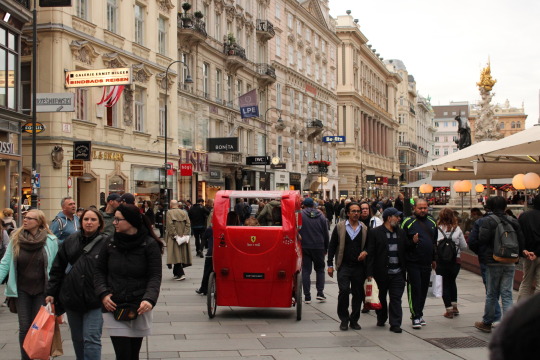
Wien, is simply the local word for Vienna in German language. The city was too beautiful and clean by every inch. We were so amazed to locate ourselves in the city of Mozart, Beethoven and Sigmund Freud. Our Airbnb apartment had a well-equipped kitchen. But as we were on the go we decided to have our first meal in Vienna at a local restaurant and enjoyed the local food. The first day we decided to just roam around the city by foot. The narrow streets, old cathedrals, small restaurants and coffee shops had a unique appeal. We also visited Naschmarkt, Vienna’s most popular market, where we did some shopping.
We took a stroll along Danube, the river which we had seen only in geography maps was right in front of us. We were sitting on the bank of this river amidst greenery and tranquility. The surface of Danube appeared like shining steel.

Naschmarkt, Vienna
Our next destination was Schönbrunn Palace which was surrounded by French style statues. The garden of the palace was spectacularly decorated with flowers. From the top of the palace garden the view of the Vienna city was one of the most attractive things we had ever seen. After that we visited Belvedere Palace, the opera house, the Ruth House square one by one. The house of Beethoven and Freud were nearby to each other. We also took a tour of St Stephen’s cathedral, one of the most important Gothic structures in Vienna. We were tired after sight seeing the whole day and decided to take the turn from the metro station to our homestay. The next morning we had the bus from Vienna to Salzburg. In spite of language barrier, we enjoyed the hospitality of the amiable Austrian family.
Salzburg, Austria
The journey from Vienna to Salzburg via St Michael’s Station was memorable. The landscape outside the bus was something like a fairytale story. We reached St. Michael, a solitary rail station with scenic views of mountains around it. Here we were waiting for our bus towards Salzburg. We reached Salzburg at dusk. From the bus stop we took a city bus for moosstraße to our Airbnb homestay at Salzburg, hosted by Cony. A warm and cozy room was allotted for us. We found chocolates and greeting card in the bed. It added a personal touch. At night we dined out in a nearby restaurant where we had a Salzburg special meal of schnitzels. Next morning, we prepared our own breakfast and availed a city bus and reached the main land marks of the city.
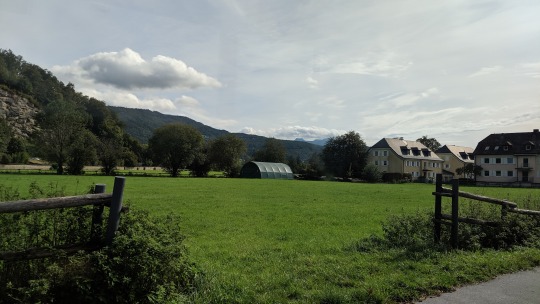
Nature, Salzburg
As soon as we stepped down from the bus a wonderful feeling came over me. The same streets had been walked upon by one the greatest musician Amadeus Wolfgang Mozart. The house in which Mozart was born is preserved as a museum, displaying his personal belongings. A variety of Mozart’s possession, from the strands of his hair to the violin, piano he played, his tobacco box, notations of music scribed in his own hand were preserved with his brilliant compositions playing in the background. Photography was prohibited there. They were only displayed for human eye.

Love locked bridge on the Salzach River
Another fabulous experience in Salzburg was the Salzach river cruise. Our captain was a young lady. The sights were historical importance and the commentary was being played as the cruise moved along the river. Another surprise was waiting for us at the end of the cruise. The captain suddenly rotated the boat to the music of Mozart playing in the back ground.
The next morning, we reached Unterberg which was located in the outskirt of Salzburg by local bus. The journey to Unterberg was laden with greenery which was a great sight for sore eyes. When we reached the bus stop, we had to take a cable car to the top of a mountain. We got great views of the valley from the top. When we reached the top of the mountain a heavy cloud around us which ultimately disappeared to give us the great view of the valley.

view from Hohensalzburg, Austria
Our next destination was castle Hohensalzburg, which was 900 years old. It was one of the oldest castles in Europe. It was evening by the time we finished exploring the castle and we headed back home. Thanks to the kitchen facility available in our homestay we could cook traditional Bengali dishes with ingredients brought from the local supermarket.
Berchtesgaden, Germany
Next day we availed a bus from Salzburg to Berchtesgaden. It was an unscheduled trip. Throughout the journey, the river flowed along with us. Soothing green patches with small cottages were scenic and beautiful. First, we stepped down to the bus in Berchtesgaden bus stop. Dense foggy weather covered the area. The trees with its yellow coloured leaves were prominently visible through the fog. From here we had another bus to Kehlesteinhaus. The eagle's nest on Obersalzberg mountain in Berchtesgaden was located at the height of 1834 meters above sea level. From the bus parking area, a 124 meter. tunnel through the solid mountain rock took us to a lift. The interior of which were filled with mirror and polished brasses. The lift took us to the eagle’s nest. It was used exclusively by a number of Nazi party for government and social meetings.

Foggy Bus Stop, Berchtesgaden
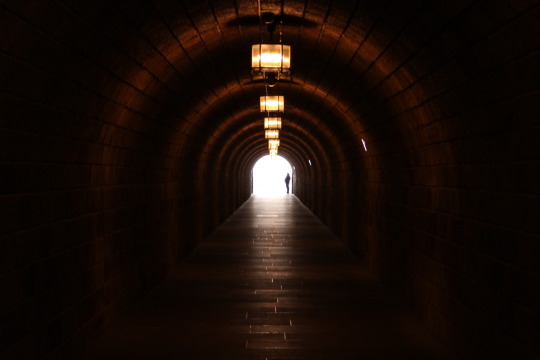
Tunnel leading to Eagle’s Nest, Berchtesgaden
It was snowing when we reached to the top. The architecturally unique building now features a mountain top restaurant offering an outstanding panoramic view of the area and we had hot coffee while taking in the sights. It was evening when we came back to Salzburg. Now there was a preparation to leave Salzburg and go to Venice by train next morning. The train left the station with the memories of the romantic, musical place, the city of Julie Andrews’ sound of music.
Venice, Italy
One side the gloominess of the mind on leaving Austria and on the other side an excitement to see another romantic place overwhelmed me. Also, the train journey was tremendous. The Alps accompanied us for the most of our journey. In the afternoon, we reached the station, Venezia Mestre and collected the transportation passes. It took us 14 minutes to reach out Airbnb, which was very well decorated with our essential needs. We took some rest and embarked upon our destination. From our Airbnb to Venice, there was very frequent bus service. The canals, the gondolas, the ancient houses constructed under water, amazed us.
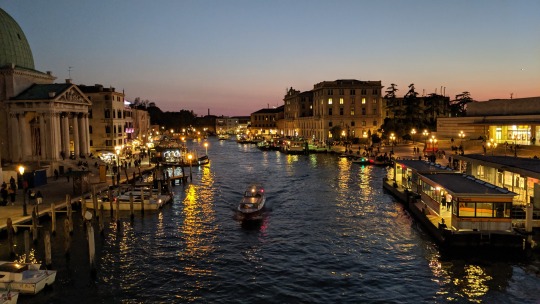
Dusk at Venice, Italy
First day in Venice, we travelled by foot and gondolas. The more we travelled, the more we got immersed with the charm of Venice which was preserved like it was 500 years ago. The bridges, the narrow streets, the coffee shops, many small stalls all were very enjoyable. After a dinner with spaghetti and red wine we started walking back to the bus stop. Venice was sparkling like a jewel with lights shining brightly reflecting on the canals like an intoxication haze.
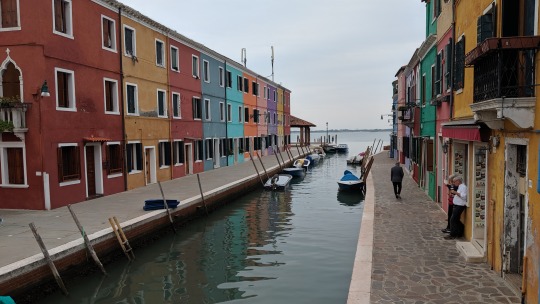
Burano, Italy
Second day our first destination was Saint Mark's square, views of St. Mark’s basilica and Doges Palace, numerous pigeons, a live music created an interesting ambience. From here we caught the vaporetto (public water bus) towards Murano island. We travelled through the sea green coloured Adriatic Sea. It was completely different, less crowded island with great architecture and obviously the world-famous glass shops. Murano is well renowned for its glass factories.

Murano, Italy
Next day our plan was for Burano, another island. It took almost one hour to reach. The Island was picture perfect, very calm and quiet. The multitudes of coloured houses created a kaleidoscopic effect. While we were roaming, we saw the native women knitting the lace work, which was very famous in Burano.
Florence, Italy
Next morning, we took a bus from Venice's Tronchetto bus stop towards Florence. Our booking was in the hotel named Camping Firenze, consisting of many cottages from which we were allotted one. We roamed around the hotel's huge premises on that evening. The luxurious arrangement of our cottage dispelled our fatigue. Next morning, our hotel arranged a minibus for the guests of the hotel to the main sights of Florence. The city Florence, the capital of Tuscany, my dreamland was just front of me. Florence was the cradle of renaissance which eventually spread to the rest of Europe. Thinkers, writers, philosophers, painters, sculptures, scientists, architects, political figures who led the birth of renaissance were all born in and around Florence. Some prominent figures were Leonardo da Vinci, Michelangelo, Masaccio, Donatello, Ghiberti, Brunelleschi, Verocchio, Botticelli, Ghirlandaio, to name a few. The city resonated with the spirits of these great Florentines.
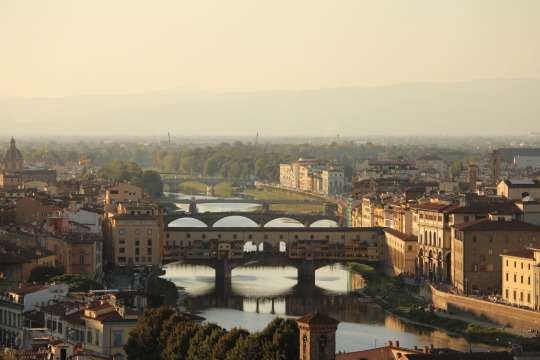
View from Piazzale Michaelangelo, Florence
We started our visit with Uffizi gallery, the famous art museum. A marvelous collection of ancient and modern sculptors and paintings. It housed the works of Leonardo da Vinci, Michaelangelo, Botticelli and many more. After that we came over the Piazza Della Signoria, one of the most famous squares in Florence. The square was surrounded by some of the most famous buildings in the city. There was a long queue in the front of Galleria del Academia, where we stood with awaited breath in the queue for the masterpiece "David" about which I mentioned to you in the starting. Santa Croce church was another attractive spot for us. Beside the frescos, we had we had another inquisitiveness to see the burial place of greatly honoured Florentines like Galileo Galilei, Leonardo Da Vinci, Dante, and so on.

Another View from Piazzale Michaelangelo, Florence
The landmarks which we wanted to see in our short time were at walking distance within each other. After lunch we treated ourselves with the world-famous Gelato of Florence. From the square, we arrived at Ponte Veccio which was the oldest bridge in Florence in Arno river. From there we walked up to the top of Piazzale Michelangelo to observe the moment of mesmerizing sunset of Florence. The panoramic view of the whole city, the bridge Ponte Veccio all were very photographic. Apart from the photographs the scenes got imprinted in our mind forever. From here we boarded the same bus and returned to our hotel. The stay in Italy was augmented by the Italian cuisine of delicious pizzas, spaghetti and lasagnas.
Next day in the very early morning our cab took us for the airport towards Paris. We left the city which seemed a page from a history book to us. Studying the history of Florence made it convenient for us to relate to the city.
Paris, France
As our Europe tour was during autumn, the colour of trees were vibrant , the crispy leaves were lying on the beautiful streets and parks which made our staying in Paris very special .Our Airbnb was in Bagnolet. Our landlord was an artist. The buses and metro were our main conveyance in Paris. The metro was very well connected all over the city. From our Airbnb we headed towards the most iconic Eiffel Tower. From there we walked along with the river Seine during sunset. The book shops on the bank of the river reminded us of College street boiparha of Kolkata .The dazzling city of Paris looked surreal in the reflection of the city on Siene at night.

Seine at night, Paris
Pere Lachaise cemetery, probably most visited cemetery in the world was our first visit of the next morning. The final resting place of Oscar Wilde, Jim Morrison, Federic Chopen and many famous personalities. From here our destination was Montmartre. We reached the top walking through the steep streets of Montmartre. It was reverberating with the voices of innumerous tourists. I had a wish to make a portrait of myself by a professional artist which was ultimately fulfilled. The Grape harvest festival in Montmartre in October was another attraction to us. Sacre-Coeur, a Roman catholic church was our next visit. We enjoyed an outstanding view of Paris from here. On our way back, we did some shopping from the streets.

Montmartre, Paris
We kept aside the next day for one of the largest art museums in Europe, Musée d'Orsay. It had the largest collection of impressionist and post-impressionist masterpieces in the world by painters including Vincent Van Gogh, Paul Gauguin, Claude Monet, Edgar Degas, Edouard Manet, Paul Cezanne, Auguste Renoir, Alfred Sisley... the list goes on. After spending a lot of time there, we visited Tuileries Garden, a pleasant place for walking and relaxation. It is located between Louvre and Place-de-la Concorde. Champs Elysees, is probably the most beautiful avenue in the world, connecting Arc de Triomphe to the Place-de-la Concorde. We had a great experience walking on such an iconic street in Paris.
Arc de Triomphe, one of the famous monuments in Paris with its immense historical and architectural significance was our next visit. A thunderstorm appeared from nowhere and drenched us. We ran for shelter under the giant arches, where we sat for a long time. Place-de-la Concorde is the largest square in Paris. It is historically significant for having notable public executions including that of king Louis XVI, during the French Revolution. We wanted to visit Notre Dame cathedral but unfortunately it was closed for renovation.
We reserved the final day in Paris for the tour of Paris Saint German stadium which is one of the most famous stadiums in Europe. Our next visit was to Luxembourg Garden, which is owned by the French Senate, with its offices adjacent to the magnificent garden. It consisted of fountains, rows of statues, multicoloured flowerbeds and ponds with ducks swimming in it. It was a perfect place to enjoy the autumn, a place that inspired creativity. We kept the last evening in Paris for aimlessly roaming around the romantic streets enjoying with crepes and hot chocolates. Early next morning, our cab took us to the Charles de Gaulle Airport where we prepared to return home.
Europe has many layers to it, from the advancements in technology, to the unpolluted nature and the historical landmarks, preserved just like it was centuries years ago. This makes us want to visit Europe again and again.
- Shila Mukhopadhyay
3 notes
·
View notes
Video
vimeo
BART CHAT 7/15/19
Greetings all
Dallas Medianale Part II is finally upon us. This is the program of video art and experimental film work that will be at the Latino Cultural Center on Wed and Thursday of this week. on Wed doors open at 2 and program got to 9:30 pm and Thru the first program starts at 4 to 9:30 pm and no we are not running straight though there are 6 programming blocks (4 on Wed and 2 on Thursday) each between an hour and 90 min and with plenty of time in-between to talk to the artists and your friends (new and old) about what you are seeing and check out the video installations in the lobby.
Before I get into the program I need to tell you that while there is ample parking at the Latino cultural center, there is construction at the intersection of Live Oak and Good Latimer, which would be the normal way of getting there. The streets around there are tricky so if you are on Good Latimer turn north on Florence street go one block and you will be at the back entrance to the LCC.
You might want to give yourself just a few moments to get there. Sometimes when you go to a film festival there is a how-to fest section in the program book, most of the time I think our audience can figure this out but here for the Medianale, I think a bit of explanation is in order. With a bit of context, I think you might enjoy what you see a bit more. as I often to I’ll start with a bit of historical context. The event that was the precursor to the video fest, Video as a creative Medium, was in 1986 at the Dallas Museum of Art, I curated this with John Held Jr. It was 2 nights, the first was local video art and the second night featured work from around the US. It was a great program at the DMA and among other things, I met Susan, who is now my wife. When we did the program in 1986 there were lots of area video arts whose work was never really shown here. Now we have lots of really great videos artists who show their work around the country, but not often here in Dallas.
The local work is strong and sophisticated, for those of us in town we will be proud of our community. For this program as opposed to the 1986 one I am mixing this great local work with work from around the world, So the first thing to think about when looking at this work is to change your expectation. We are used to film and media that explains things and works in a tightly contested time frame. This work wants you to change how you think of screening time. When you approach a piece of sculpture in a gallery, you explore what is there, you look for what is about, both in the subject and in form, light color line, and shape. How is the artist using the media to sculpt a vision of the word that gives you a different impression than you might have thought of before? Think of approaching work like that. Experimental work gives you something to complete in your mind, what is the maker playing with or suggesting. Instead of putting your brain on vacation like for a marvel film, watch carefully and use your brain it to make exploring and associations.
Don’t expect every frame to entertain you, but each frame is carefully crafted to give you an experience. This work comes from 2 similar but different traditions. There is experimental film that goes back to early cinema when filmmakers explored using film in nontraditional ways. Because film is expensive each frame was expensive the work often was not that long, but of course there were many exceptions, Experimental filmmakers will often have a higher level of craft, sometimes using hand made film processing techniques to abstract the image, and in fact some of these films were about the process of abstraction. I remember seeing early computer graphics work and thinking hey there are cheating. So experimental filmmakers come from the film world. Video artists often emerged from the art world, being painters, sculptures and photographers who decided to add motion and time into their work.
Since videotape was cheap, and people often re-recorded over tapes rather than using new ones (leaving some work lost forever) these projects tend to go and on. In my grad school days, I was in the film camp and I was interning at a place where video artists were working and I had a hard time understanding their sense of time, but I finally got it. I was crafting frames they were crafting a frame of mind, a perspective, a way of seeing. We have examples of both in this program and we have a wide variety of how to think about and approach media making, So come with an open mind and you will be rewarded. Did I mention it is free?
Before I sat down to write this I thought I would recommend a few programs (which I know is what you want) but I really like all of them, that is why I picked them so it would fail to promote any specific program. But I would say that the performances we have on Thursday evening will be something really special, and live performance with video is pretty amazing. (if you really want specific suggestions email me [email protected]) But I can mention that Tamitha Curiel who has editing this and all the Bart chats is starting us off with a video and performance on Wed at 2 pm so we start and end with performance. Hope to see you on Wed and Thursday.
There is so much else going on. On Friday night the texas theater and wild detectives are showing a series of shorts called Moments in Mexico . There were shows as an op docs series on the NY Times site, One of the filmmakers Diego Rabasa will be in attendance, and I will be doing the q and a so come by and say "hi." These films are all both thought-provoking and formally fascinating. The Asian Film Festival Dallas starts on Thursday night and goes until the 25th, Yes I now we are overlapping (sorry it could not be helped) There are some great films there. We are sponsoring the documentary shots program will be next Monday, Of the films I have seen I would recommend Where the Sun Don’t Shine, Go Back to China, Long Time no Sea, and This Little Land of Mines. Elsewhere the Alamo in The Cedars is showing Purple Rain on Monday night in a movie party not sure what that will entail. Also at the Texas Theater, they are showing Pulp Fiction, getting us ready for Once Upon a Time in Hollywood, and also The Doors the final cut, which is a new 4 k restoration. That’s it for this week so open your mind and come to the Dallas Medianale!
Bart Weiss
Artistic Director, Dallas VideoFest
2 notes
·
View notes
Link
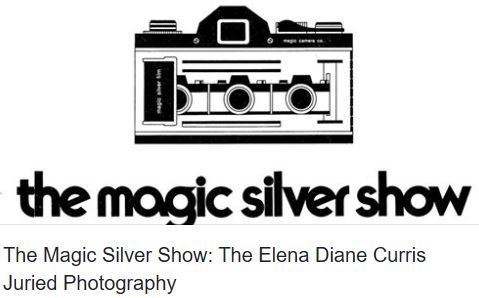
The Magic Silver Show began in the mid 1970’s as a juried exhibition designed to encourage, foster understanding, and reward those involved in photographic media. This exhibition will present a survey of contemporary photo media in all aspects and genres of photography, film, and video.
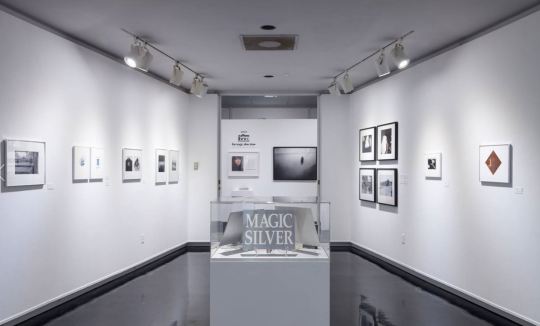
Bradly Dever Treadaway, Juror
Juror Bio
Bradly Dever Treadaway is a Brooklyn based artist, curator, and professor utilizing lens-based image making, sculpture, installation, and performance to comment on the breakdown of inter-generational communication. His work revolves around fleeting family histories visualized through archival interventions and elevated domestic rituals while questioning material significance within the photographic medium. Treadaway is a Fulbright Scholar to Italy and works as both a Faculty member and the Digital Media Coordinator at The International Center of Photography in New York City. His work has been exhibited at the Whitney Museum of Art, Center for Photography at Woodstock, The International Center of Photography, The Mobile Museum of Art, The Ospedale degli Innocenti in Florence, Italy, and the Lishui Museum of Photography in China. His film/video work has been screened at the New Orleans Film Festival, the Carnegie Museum of Art, the National Centre for Contemporary Art in Moscow, Russia, Union Docs, Anthology Film Archives, the Nashville Film Festival, the Coney Island Film Festival, and at the Brooklyn Arts Council’s Scene: Brooklyn.

March 29, 2019 in The Clara M. Eagle Gallery at Murray State University.
The University Galleries has the ability to host a variety of exhibitions. The Clara M Eagle Gallery is a dynamic multi-level exhibition space for visitors to learn about the history of art and contemporary new media. With 8,200 sq. ft. of exhibition space and over 1,200 works of art housed in our permanent collection, The University Galleries at Murray State are a constant source of innovative programming and educational research within the community. The Clara M. Eagle Gallery, the Eagle Upper Gallery, and the Mary Ed Mecoy Hall Gallery are located at 604 Fine Arts Building in Murray, Kentucky on the campus of Murray State University; The Curris Gallery is located on the first floor of the Curris Center, at 1500 Chestnut Street.
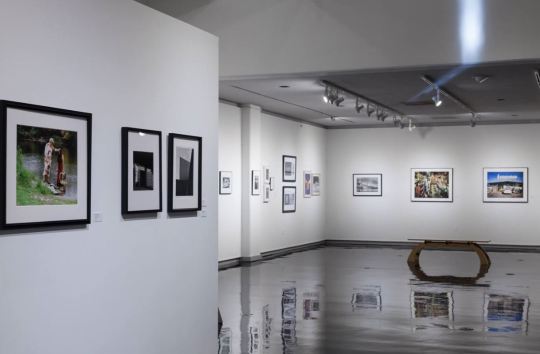

The Magic Silver Show: The Elena Diane Curris Juried Photomedia Exhibition
Located on the 6th floor of the Price Doyle Fine Arts Building, The Clara M. Eagle Gallery is a dramatic and exciting multi-level exhibition space. An integral part of the Department of Art, it serves as a unique source for experiencing fine art "first hand’’
Murray State University Art Galleries seeks to be a tool in the advancement of cultural knowledge; a laboratory for creative experimentation and expression; and a forum in which students and scholars may engage in creative and intellectual discourse with regional, national, and international artists. Gallery events and exhibitions are free and open to the public.
Hours
Gallery Hours are: Monday - Friday: 8 a.m. - 4:30 p.m.
The University Galleries at Murray State are the most public aspect of the Department of Art & Design’s operation and consist of four distinct exhibition spaces. The Clara M. Eagle Art Gallery occupies three spaces. It is located in the Price Doyle Fine Arts Center and occupies much of the sixth and seventh floors. It consists of 4,000 square feet of exhibition space on the main level with part of that space called the Mary Ed Mecoy Hall Gallery, 1,500 square feet on the upper level and 1,600 square feet of support space. There is a permanent collection of 1,200 pieces of art housed at The Clara M. Eagle Gallery in the support space. The Curris Gallery is in the Curris Center, the campus student union, and is located on the ground floor. It consists of approximately 1,000 square feet of exhibition space.
1 note
·
View note
Photo
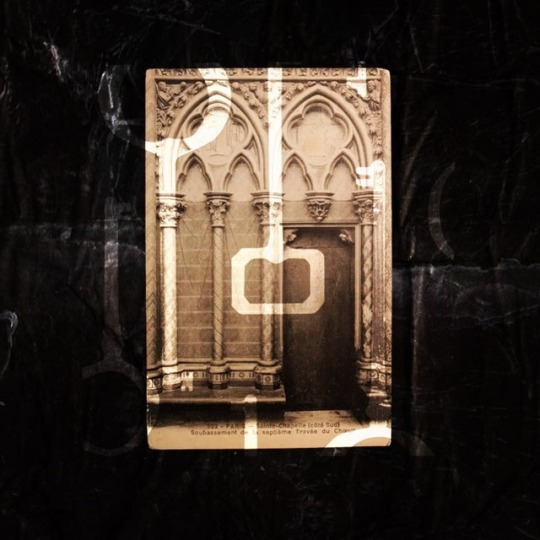
“GHOST NOTES” my solo show at @streetlevelsgallery - 21.09.2018, Florence. Detail from “I’m With You” - photo found in Paris by @paolafortes Edited by @lucifross & @misillustration_ . #ghost #notes #ghostnotes #imwithyou #exibition #soloshow #paint #streetlevelsgallery #progeasfamily #art #florence #igflorence (presso Street Levels Gallery)
#ghost#notes#ghostnotes#imwithyou#exibition#soloshow#paint#streetlevelsgallery#progeasfamily#art#florence#igflorence
3 notes
·
View notes
Text
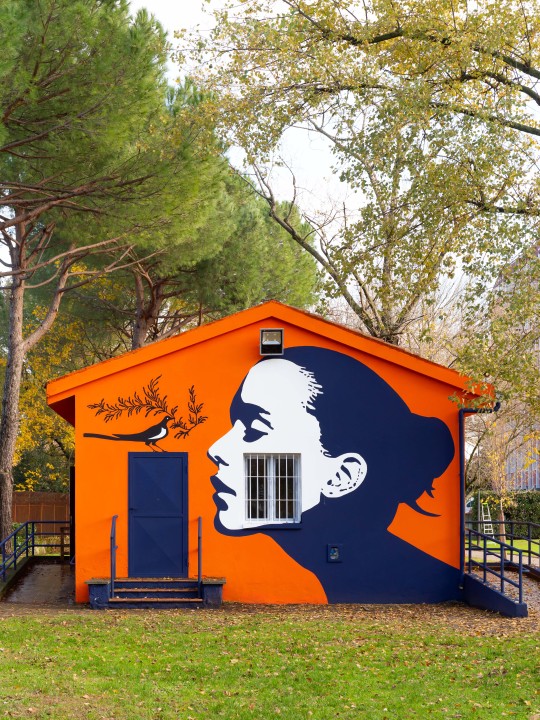
Streetart by Ache77 @ Florence, Italy, for Street Levels Gallery
More info at:
https://barbarapicci.com/2023/12/12/streetart-ache77-florence-italy/
3 notes
·
View notes
Text
Streetart – Aec @ Florence, Italy — Barbara Picci
Streetart – Aec @ Florence, Italy — Barbara Picci
Aec @ Florence, Italy Aec @ Florence, Italy Location: Florence, Italy Artist: Aec With: Street Levels Gallery Address: Guido Guidi USEFUL LINKS: AEC in this blog | Instagram | Facebook
Streetart – Aec @ Florence, Italy — Barbara Picci
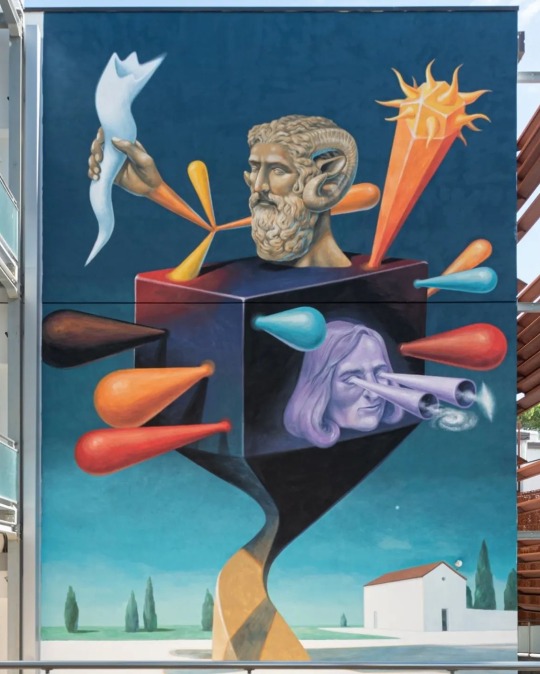
View On WordPress
0 notes
Text
Exploring the Eternal City with Exclusivity: Unveiling the Allure of Private Tours
Introduction
Nestled in the heart of Tuscany, Florence is a city that whispers secrets of the past while embracing the vibrancy of the present. With its rich history, stunning architecture, world-renowned art, and delectable cuisine, Florence offers an unparalleled experience to travelers seeking to immerse themselves in the essence of Italian culture. For those who crave a more personalized and intimate exploration, a Private Tour Agency Florence Italy in Florence, Italy, unveils the city's treasures in a way that transcends the ordinary.
The Allure of Private Tours
While group tours can provide an informative overview of Florence's landmarks, private tours offer an entirely different dimension of exploration. A private tour agency in Florence caters to the discerning traveler who seeks to tailor their experience to their interests, pace, and preferences. Whether it's delving deep into the artistry of the Uffizi Gallery, strolling through the charming streets of Oltrarno, or savoring Tuscan wines in the picturesque Chianti countryside, private tours offer a level of exclusivity that transforms sightseeing into an unforgettable journey of discovery.
Personalized Itineraries
One of the most enticing aspects of opting for a private tour in Florence is the ability to create a personalized itinerary. Travelers can collaborate with experienced local guides to craft a route that aligns perfectly with their interests. Whether you're an art aficionado, a history buff, a food lover, or simply seeking hidden gems off the beaten path, a private tour agency can curate a unique experience that caters specifically to your desires.
Intimate Cultural Immersion
Florence's charm lies not only in its iconic landmarks but also in its local customs and traditions. Private tours provide an opportunity to engage with the city's authentic culture on a personal level. Engaging conversations with knowledgeable guides shed light on the stories behind the architecture, the anecdotes behind the artwork, and the history behind the cobblestone streets. Through private tours, travelers can connect with the heart and soul of Florence, gaining insights that are often missed in larger group settings.
Skip the Lines and Crowds
One of the most practical advantages of a private tour in Florence is the ability to bypass long lines and crowded tourist attractions. With a dedicated guide by your side, you can maximize your time and make the most of every moment. Whether it's gaining expedited access to the Florence Cathedral's magnificent dome or enjoying an intimate exploration of the Vasari Corridor, private tours ensure that your experience is as seamless as it is enriching.
For more info:-
Private Tour to Florence
Jewish Quarter Tour in Florence
0 notes
Text
Cantilevered terrace adjoins 14th-century townhouses overhauled by Mario Cucinella Architects
Italian studio Mario Cucinella Architects has designed a cultural centre in Tuscany within traditional houses, which connect to a new angular terrace that protrudes from the hillside.
Located in the medieval hillside town of Peccioli, situated between Pisa and Florence, Palazzo Senza Tempo was built as a response to the local government's push for new cultural programmes and built heritage.
The Palazzo Senza Tempo cultural centre occupies a series of renovated townhouses in the hillside town of Peccioli
The centre occupies a number of renovated and repurposed 14th-century townhouses above a steep slope, as well as a new two-storey structure with a cantilevered plaza that protrudes from the side of the hill.
"The redevelopment works as a bridge between the historical memory, which characterized these buildings, and its future, a civic and cultural centre for the town of Peccioli, the entire Valdera, and the thousands of tourists visiting each year this extraordinary open-air museum," Mario Cucinella Architects told Dezeen.
Mario Cucinella Architects renovated the historic houses in a way that celebrates their history
Across its multiple levels, the cultural centre houses apartments, gallery spaces, work areas, a library, cafe, restaurant and a 600-square-metre cantilevered terrace.
The facades of the townhouses maintain their traditional aesthetic, but have been updated with protruding full-height windows that visually tie to the contemporary angular structure below.
"The relationship between nature and architecture is the main character here: the bow windows with their volumes are projecting from the external facade, collecting the light and projecting the gaze towards the outside by incorporating it," said the studio.
A courtyard area is topped with a large glass roof
The cultural centre is accessed via a passageway between two former houses, which leads visitors to an internal courtyard that Mario Cucinella Architects has covered with a large glass roof.
Much like their exterior, the houses have been renovated inside to preserve their aged characteristics. Stone, brick and render cover the walls, floors and ceilings – all treated and finished in keeping with a ruined and raw appearance that hints at the buildings' history.
Read:
Presicci + Pantanella D'Ettorre Architetti creates minimalist Tuscan farmhouse
Visitors are led from the restored townhouses out to the centre's large terrace, which juts out to provide undisturbed views across the vineyards and olive groves situated below.
"The terrace is like a bridge that flows towards the landscape and let the town establish a relation with the surrounding countryside," said the studio. "The free public street access reinforces the concept by transforming the terrace into a central public square."
A large angular terrace cantilevers out towards the Tuscan countryside
Directly beneath the terrace is a two-storey structure enveloped in floor-to-ceiling glass across its three elevations. The interior of this new addition was lined in wood, framing the expansive Tuscan views.
The studio used materials that it hoped would complement the historic town but also provide a contemporary injection to the site.
The terrace forms a large public square with views across the olive groves and vineyards
"Peccioli is a real laboratory", said Mario Cucinella. "In the project we wanted to carry on the idea that historical centres can give themselves a new life with contemporary elements, not living only in the past."
"Even the new terrace is like a bridge connecting a landscape that looks like a painting from the 1500s and the modern world," he continued.
“With the opening of Palazzo Senza Tempo, Peccioli launches an important theme, that of communities and their public places. It shows the courage to do something ambitious, while respecting history, and, to keep the citizens of an old Tuscan hill town young people”.
A new glazed structure below the terrace contrasts with the older buildings above
Earlier in 2021, Mario Cucinella Architects collaborated with 3D-printing specialists WASP to produce a low-carbon housing prototype that was printed using local clay.
Elsewhere in Tuscany, Valeria Presicci and Carlo Pantanella D'Ettorre built a house that features a simple stone exterior and pared-back interiors.
The photography is by Duccio Malagamba.
The post Cantilevered terrace adjoins 14th-century townhouses overhauled by Mario Cucinella Architects appeared first on Dezeen.
0 notes
Text
Meet: Bethany Lee
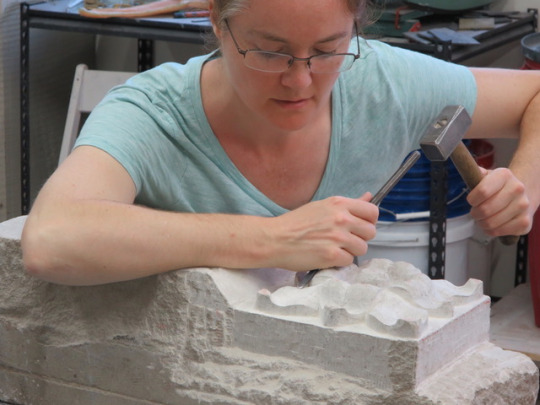
BETHANY LEE is a painter and sculptor. www.belfineart.com
Catholic Artist Connection (CAC): What brought you to NYC, and where did you come from?
Bethany Lee (BL): My hometown is St. Paul, MN. In 2013, I moved to New York in order to serve as a lay missionary with LAMP Ministries in the Bronx.
CAC: How do understand your vocation as a Catholic artist?
BL: As a Catholic Artist, I see my mission as the contemplation of beauty through the creative process. Because beauty is one of the attributes of God, this is ultimately evangelical.
CAC: Where have you found support in the Church for your vocation as an artist?
BL: On a fundamental spiritual level, being a part of the Church has changed me from being an artist because I just like to draw to being an artist who experiences God and loves other people supernaturally through my work. It's a very different thing being an artist as a Catholic rather than as a pagan. The Church has also provided me with the opportunity to meet other Catholic artists and to grow spiritual through organizations such as the Catholic Artists Society, the Catholic Artist Connection, and Sacred Beauty. Materially, the Sheen Center in Manhattan has provided support through a residency and opportunity to show in their gallery. The apprenticeship in which I am currently engaged with sculptor Andrew Wilson Smith came about as the result of a lecture held at St. Vincent Ferrer.
CAC: Where have you found support among your fellow artists for your Catholic faith?
BL: I'm currently studying in the drawing and painting program at the Florence Academy of Art in Jersey City. My fellow students and instructors (few of whom are card-carrying Catholics) are real servants of Beauty and are a daily inspiration to me. Within the official bounds of the Church, I've been blessed with the friendship of people I've met through the Sheen Center and other Catholic Artist organizations who have been more explicitly supportive.
CAC: How can the Church be more welcoming to artists?
BL: Beautiful liturgy.
It seems to me that lots of people within the Church are bending over backwards to help and include artists but without really understanding what it is that their lives are like and what they need. I think there are a lot of simple things that the Church can do (and in many cases already does.) Here are two examples: People working in the arts often have weird work schedules and so it can be difficult to do things like get to daily mass. One of the things I love about living in New York City is that there are so many different masses at different places and times available. I use the MassTimes.org app all the time.
Another thing about people working in the arts (especially the visual arts) is that their work life can tend to be isolating - in a variety of ways. That means that it is really important to have ways to connect with other people in the church. The church I have been attending has a well attended "convivium" (coffee and donuts with wine, basically). The 20 minutes of conversation after mass really means a lot to me. Both of these examples, however, seem to me to be things that would help your average single, workaholic adult in New York City.
CAC: Where in NYC do you regularly find spiritual fulfillment?
BL: I've been attending 9AM mass at St. Anthony's in Jersey City. We sing chant and polyphony. It's glorious. Are there any singers out there? Come sing with us.
CAC: Where in NYC do you regularly find artistic fulfillment?
BL: I'm a student at the Florence Academy of Art in Jersey City in the drawing and painting program. If it were any more fulfilling, I think I'd explode.
CAC: What is your daily spiritual practice?
BL: My formal prayer life is very flexible. There are a couple of things I am committed to no matter what and other things that are optional. It's changed a lot over the years and has helped a ton to have a spiritual director.
CAC: What is your daily artistic practice? And what are your recommendations to other artists for practicing their craft daily?
BL: Some time spend in observational drawing every day is a must.
CAC: Describe a recent day in which you were most completely living out your vocation as an artist.
BL: Hm. That's a really good question. Just a normal day at the Florence Academy. Look at stuff. Paint it. Through that act, be present where time touches eternity. It's the ordinary days in the studio, doing what I love to do that seem most complete.
CAC: You actually live in NYC? How!?
BL: So, I actually first moved to NYC as a lay missionary working with a ministry. They provided housing. It was actually a really good way to get to know the city. At that time, I had given up my studio practice because I thought God was calling me to a different way of life, so maybe my case is not particularly helpful to other people. But, seriously, in my own experience, the most practical thing is to surrender your life to God and ask for the next best action. Also, Jersey City is lovely. Rent in McGinley Square is not too bad. I live in a boarding house. It's clean and there are no bugs, but I don't get a kitchen and I share a bathroom.
CAC: But seriously, how do you make a living in NYC?
BL: I'm currently self-employed and a full time student. I'm engaged in a variety of free-lance activities the most sketchy of which is street peddling. I recently submitted a painting to Paradise Found Studios which is a website where people can buy prints of art that echo God's glory. It looks like a cool team to be involved in. Visual artists, check it out!
CAC: What other practical resources would you recommend to a Catholic artist living in NYC?
BL: The ConArtist Collective in the East Village is a communal workspace / gallery / online forum. It's sometimes scary, but it's been a good resource.
#interview#catholic#catholicartist#catholicartistconnection#catholicartistsnyc#newyorkers#newyork#bethanylee#visual art#visual artist#christianart#LAMP Ministries#Bronx#Jersey City#New Jersey#New York#NYC#Sheen Center#St. Vincent Ferrer#Florence Academy#Paradise Found Studios#Con Artist Collective
1 note
·
View note
Photo
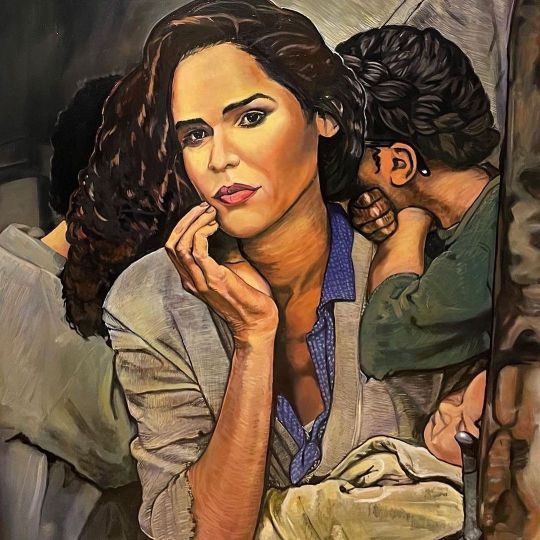
Posted @withregram • @bws.gallery Jeffrey Melo (@jaemelo) is currently working on a new series titled “The Least of These: A Painter’s Reimagination of Dorothea Lange’s Photography” where he’s reinterpreting @dorothealange’s photography during the Great Depression and considering how her photographs fit in a modern-day context. In his paintings, Jeffrey takes images of subjects in urban contexts and puts them in the place of Dorothea Lange’s subjects. Jeffrey’s subjects are people of his culture. They are also the poor and needy, the hungry and sick, the falsely imprisoned and wrongly accused. They are in effect people who Jesus referred to as ��the least of these,” hence the title of the series. This exploration of the similarities between the Great Depression and today lends itself to many critical conversations about the current economic climate and how the pandemic continues to negatively affect people of color, the poor, and the working class. Sure, the pandemic negatively affects us all on some level, but it negatively affects people of color, the poor and the working class far worse. It displaces them more. It calls for their sacrifices more. And it starves them of resources more. “The Least of These” will be on view this August at our NY location in SoHo and will invite the public to examine how much corporate greed has contributed to what likely will lead to yet another market crash, perhaps one reminiscent of the Great Depression. Jeffrey will have some ten oil paintings in the series and the vast majority of them will be 60 x 72 inches. The featured painting in this post is titled “Hungry and Desperate Mother“ and it reimagines Dorothea Lange’s iconic 1936 photograph of Florence Owens Thompson, a 32-year-old hungry and desperate mother who along with her three children had been living on frozen vegetables from the surrounding fields and birds that the children killed. We’re excited for this powerful exhibition because we love Jeffrey’s paintings and Dorothea Lange’s photography. We also value the idea of reimagining important works in the art canon. (at Black Wall Street Gallery) https://www.instagram.com/p/CLEqk9QnmkU/?igshid=9te56eywn7ul
0 notes